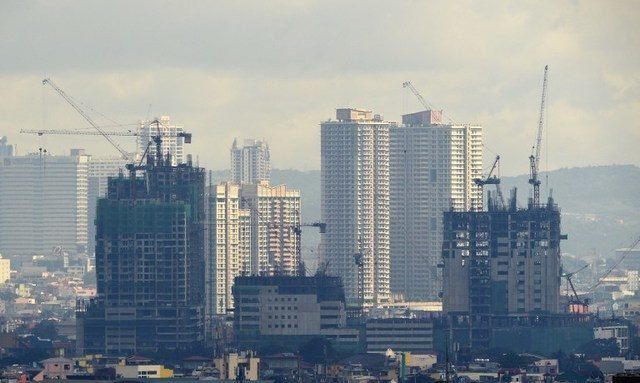SUMMARY
This is AI generated summarization, which may have errors. For context, always refer to the full article.

MANILA, Philippines – Moody’s Investor Service has pegged the gross domestic product (GDP) growth forecast for the Philippines at 6.5% in 2017, as sound economic and fiscal fundamentals offset structural challenges to competitiveness and rising political risks.
In its latest annual credit analysis, the debt watcher said it expects the Philippine economy to further grow at 6.8% in 2018.
The rating agency said the Philippines’ economic strength is “high,” driven by its capacity to absorb shocks amid its rapid growth, large scale, and economic diversification.
Economic managers through the Development Budget Coordination Committee (DBCC) have set a GDP growth target of 6.5% to 7.5% for 2017, and 7% to 8% for 2018.
Moody’s earlier affirmed the country’s Baa2 – a notch above minimum investment grade – on stable outlook. (READ: Philippine GDP grows faster by 6.5% in Q2 2017)
Rising political risks
Moody’s pointed out risks to economic growth, including the continued uncertainties regarding the proposed comprehensive tax reform program and the worsening Islamist insurgency in Mindanao that could lead to the expansion of martial law beyond that region.
“We expect robust economic growth to be sustained over the next few years, aided by the government’s focus on infrastructure development, buoyant private sector investment, and the recovery in external demand,” Moody’s said.
“The re-emergence of conflict in the southern Philippines, and the administration’s focus on the eradication of illegal drugs, represents a rising but unlikely risk to economic performance and institutional strength,” it added.
According to the debt watcher, the risks could undermine both foreign and domestic business confidence and at the same time disrupt economic activity in other parts of the country.
It noted the business climate and infrastructure quality of the Philippines remain weak, after it fell 10 notches in the 2016-2017 Global Competitiveness Report of the World Economic Forum due to an inefficient government bureaucracy and inadequate supply of infrastructure.
The Philippines received a moderate score from Moody’s for institutional strength, reflecting its ranking on cross-country surveys such as the Worldwide Governance Indicators and a track record of policy effectiveness as suggested by its low and stable inflation.
The rating agency cited the strong record of the Bangko Sentral ng Pilipinas (BSP), which is maintaining monetary and financial stability as inflation remained well anchored.
Moody’s cited the tax reform program being pushed by the Department of Finance (DOF) as a move to address the country’s revenue weakness.
Moody’s said the stable outlook on the Philippines’ rating indicates that upside and downside risks are balanced.
“Strong GDP growth could accelerate even further, especially if the government achieves higher investment spending. In turn, fiscal strength is likely to improve, potentially significantly,” it said. – Rappler.com
Add a comment
How does this make you feel?
There are no comments yet. Add your comment to start the conversation.